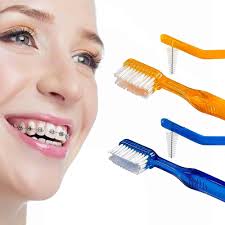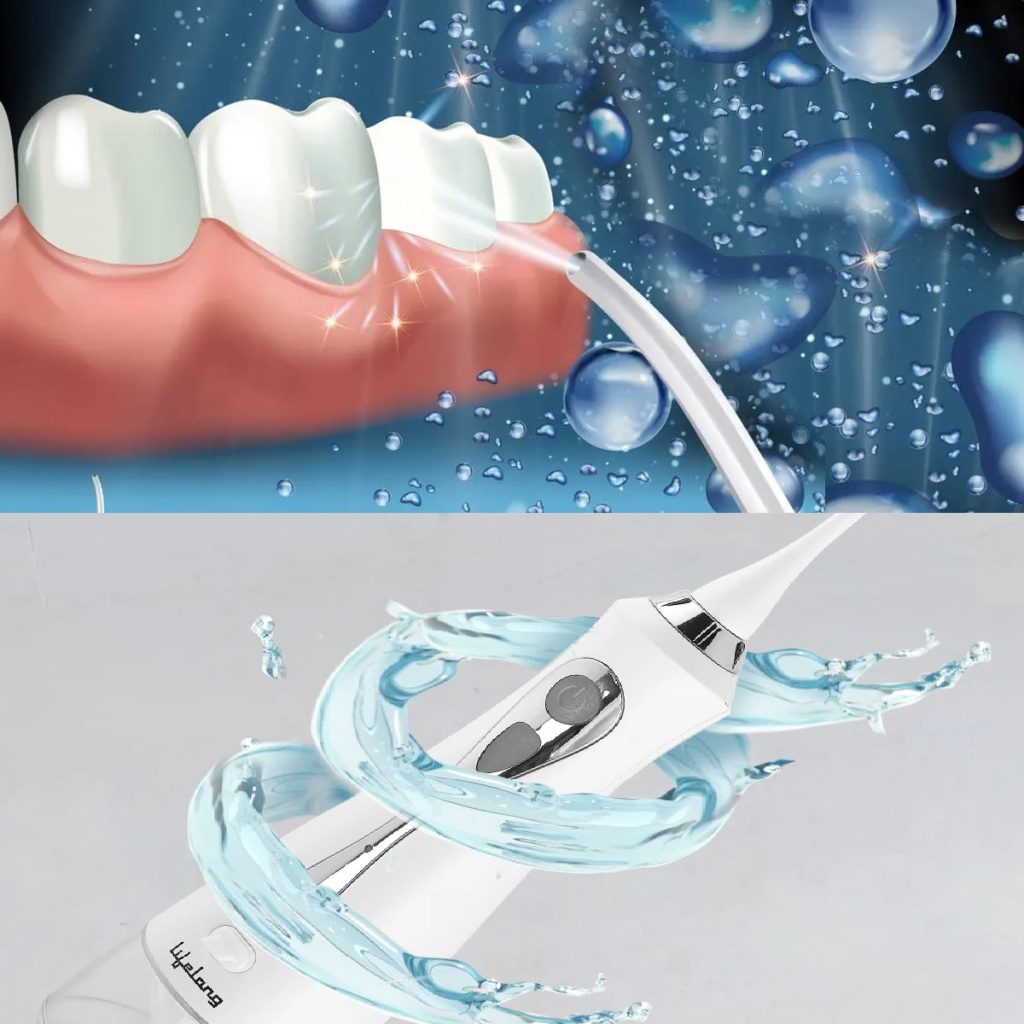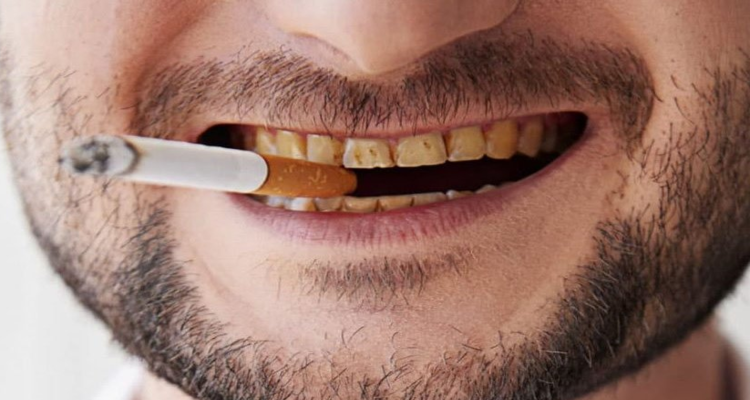Best toothbrush for braces

Maintaining oral hygiene with braces can be challenging due to the difficulty in cleaning around the brackets and wires. The best toothbrush for braces can make a significant difference in keeping your teeth and gums healthy throughout your orthodontic treatment. In this comprehensive guide, we will explore the key features to look for in a toothbrush for braces, the benefits of different types of toothbrushes, and recommendations for the best products available. As an expert dentist, I will provide detailed insights to help you choose the best toothbrush for braces to ensure optimal oral health.
Why Oral Hygiene is Crucial with Braces
Braces create additional surfaces for plaque and food particles to accumulate, increasing the risk of cavities, gum disease, and decalcification (white spots on teeth). Maintaining excellent oral hygiene is essential to prevent these issues and ensure successful orthodontic treatment. Brushing thoroughly and effectively around the brackets and wires is crucial, which is why selecting the best toothbrush for braces is so important.
Key Features of the Best Toothbrush for Braces
Soft Bristles
Soft bristles are gentle on the gums and effectively clean around the brackets and wires without causing damage to the braces or irritation to the gums. The best toothbrush for braces should have soft or extra-soft bristles to prevent gum recession and enamel wear.
Compact Brush Head
A compact brush head allows for better maneuverability around the braces and can reach difficult areas more easily. A smaller brush head can effectively clean between brackets and wires, ensuring all surfaces are thoroughly cleaned.
Angled or Multi-Level Bristles
Angled or multi-level bristles can help reach around the brackets and wires more effectively than flat bristles. This design allows for better access to the nooks and crannies created by braces, ensuring a more thorough cleaning.
Orthodontic-Specific Design
Some toothbrushes are specifically designed for braces, with V-shaped bristle patterns or other features that make cleaning around brackets and wires easier. These orthodontic-specific designs can provide a more effective clean and are often recommended by orthodontists.
Electric vs. Manual Toothbrushes
While both electric and manual toothbrushes can be effective, electric toothbrushes often offer additional benefits such as oscillating or vibrating brush heads that can remove more plaque. The best toothbrush for braces may vary depending on personal preference, but electric toothbrushes are often highly recommended for their superior cleaning power.
Benefits of Different Types of Toothbrushes for Braces
Manual Toothbrushes
Manual toothbrushes are widely available and can be very effective if used correctly. They allow for full control over brushing pressure and technique. Look for manual toothbrushes with soft bristles, compact heads, and orthodontic-specific designs.
Recommended Manual Toothbrushes for Braces
- Ortho-Gard® V-Trim Toothbrush: This toothbrush features V-shaped bristles that make it easier to clean around braces. The soft bristles are gentle on gums and effective at removing plaque.
- GUM® Orthodontic Toothbrush: Designed specifically for braces, this toothbrush has a unique cut of bristles that helps clean around brackets and wires. Its compact head allows for better access to hard-to-reach areas.
Electric Toothbrushes
Electric toothbrushes offer superior cleaning power with oscillating, rotating, or vibrating brush heads that can remove more plaque than manual brushing. They are often recommended for individuals with braces due to their effectiveness and ease of use.
Recommended Electric Toothbrushes for Braces
- Oral-B® Pro 5000 SmartSeries Power Rechargeable Electric Toothbrush: This toothbrush features a round brush head that oscillates, rotates, and pulsates to break up and remove plaque. It also has a special orthodontic mode designed for braces.
- Philips Sonicare ProtectiveClean 6100 Rechargeable Electric Toothbrush: Known for its gentle yet effective cleaning, this toothbrush uses sonic technology to drive fluid between teeth and along the gumline, making it a great choice for braces.
Additional Oral Care Tools for Braces
In addition to choosing the best toothbrush for braces, incorporating other oral care tools can enhance your oral hygiene routine and ensure thorough cleaning.
Interdental Brushes
Interdental brushes are small brushes designed to clean between teeth and around braces. They are particularly useful for removing plaque and food particles from areas that a regular toothbrush cannot reach.
Recommended Interdental Brushes
- TePe® Interdental Brushes: Available in various sizes to fit different spaces, these brushes effectively clean between teeth and around braces.
- GUM® Proxabrush Go-Betweens® Cleaners: These interdental brushes feature a flexible handle and antibacterial bristles, making them an excellent choice for braces.
Water Flossers
Water flossers use a stream of water to remove plaque and food particles from between teeth and around braces. They are highly effective and can be easier to use than traditional floss.
Recommended Water Flossers
- Waterpik® Aquarius Water Flosser: This water flosser offers multiple pressure settings and orthodontic tips designed for braces, making it a top choice for thorough cleaning.
- Philips Sonicare AirFloss Ultra: This device combines air and micro-droplets of water to effectively clean between teeth and around braces, providing a convenient alternative to traditional flossing.
Orthodontic Wax
Orthodontic wax can be applied to braces to prevent irritation and sores on the inside of the mouth. It creates a smooth surface that reduces friction between the braces and the soft tissues of the mouth.
Recommended Orthodontic Wax
- GUM® Orthodontic Wax: This orthodontic wax is easy to apply and provides effective relief from irritation caused by braces.
- DenTek® Wax for Braces: This wax is flavored and easy to mold, making it a comfortable and effective option for preventing irritation.
Proper Brushing Technique with Braces
Using the best toothbrush for braces is only effective if you also use the correct brushing technique. Here are some tips to ensure you are brushing properly with braces:
Step-by-Step Brushing Guide
- Rinse Your Mouth: Before brushing, rinse your mouth with water to loosen food particles and debris.
- Angle the Brush: Hold your toothbrush at a 45-degree angle to the gumline.
- Brush Above and Below Brackets: Use short, gentle strokes to brush above and below the brackets. Be sure to clean around each bracket and wire.
- Brush the Chewing Surfaces: Don’t forget to brush the chewing surfaces of your teeth and the inside surfaces.
- Brush for Two Minutes: Make sure to brush for at least two minutes, paying extra attention to the areas around the braces.
- Rinse Thoroughly: After brushing, rinse your mouth thoroughly with water to remove any loosened debris.
Tips for Effective Brushing with Braces
- Use Fluoride Toothpaste: Fluoride toothpaste helps strengthen tooth enamel and prevent cavities.
- Brush After Every Meal: Brushing after every meal helps remove food particles and plaque that can accumulate around braces.
- Replace Your Toothbrush Regularly: Replace your toothbrush or toothbrush head every three months or sooner if the bristles become frayed.
Common Challenges and Solutions
Difficulty Reaching Certain Areas
Braces can make it difficult to reach certain areas of the mouth. Using a toothbrush with a compact head and angled bristles can help access these hard-to-reach areas. Additionally, interdental brushes and water flossers can assist in cleaning tight spaces.
Food Getting Stuck in Braces
Food particles can easily get stuck in braces, leading to plaque buildup and potential cavities. Brushing after every meal and using interdental brushes or a water flosser can help remove trapped food particles.
Sensitivity and Discomfort
Braces can sometimes cause sensitivity and discomfort, especially after adjustments. Using a soft-bristled toothbrush and orthodontic wax can help alleviate discomfort. If sensitivity persists, consult your orthodontist for additional recommendations.
Maintaining Oral Health with Braces: Additional Tips
Regular Dental Checkups
Regular dental checkups are essential for maintaining oral health with braces. Your dentist can monitor your oral health, provide professional cleanings, and address any issues that may arise.
Orthodontic Adjustments
Regular visits to your orthodontist are crucial for adjusting your braces and ensuring your treatment progresses as planned. During these visits, your orthodontist can also provide guidance on maintaining oral hygiene with braces.
Balanced Diet
Eating a balanced diet that is low in sugary and acidic foods can help prevent cavities and maintain oral health with braces. Avoid sticky, hard, or chewy foods that can damage braces or get stuck in them.
Hydration
Staying hydrated helps maintain saliva flow, which is essential for neutralizing acids and washing away food particles. Drink plenty of water throughout the day, especially after meals.
Conclusion: Choosing the Best Toothbrush for Braces
Selecting the best toothbrush for braces is a crucial step in maintaining optimal oral health during orthodontic treatment. Whether you choose a manual or electric toothbrush, look for features such as soft bristles, a compact brush head, and orthodontic-specific designs. Incorporating additional oral care tools like interdental brushes and water flossers can further enhance your oral hygiene routine.
By following proper brushing techniques and maintaining regular dental checkups, you can ensure that your teeth and gums remain healthy throughout your orthodontic treatment. Remember, the best toothbrush for braces is one that effectively cleans around the brackets and wires while being gentle on your gums and enamel.
Embrace the journey to a healthier, straighter smile by investing in the best toothbrush for braces and adopting a comprehensive oral care routine. With diligence and the right tools, you can achieve excellent oral health and enjoy the benefits of a beautiful, well-aligned smile.
Related to read
How to Whiten teeth Naturally.
References:
- Oral hygiene program for orthodontic patients.
- An orthodontic tooth brushing technique to enhance oral hygiene in patients wearing fixed orthodontic appliances: A randomized controlled trial








